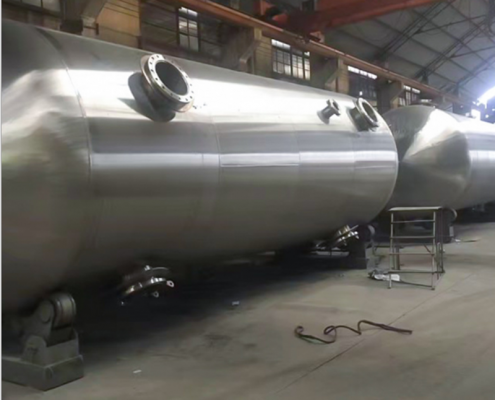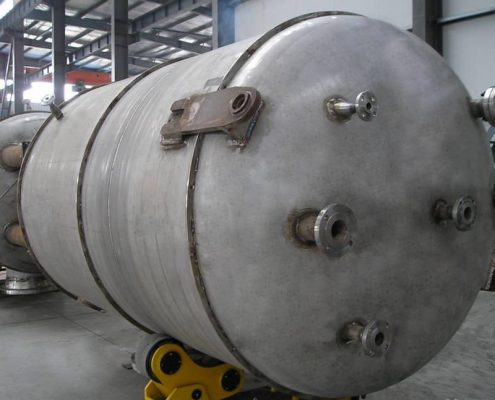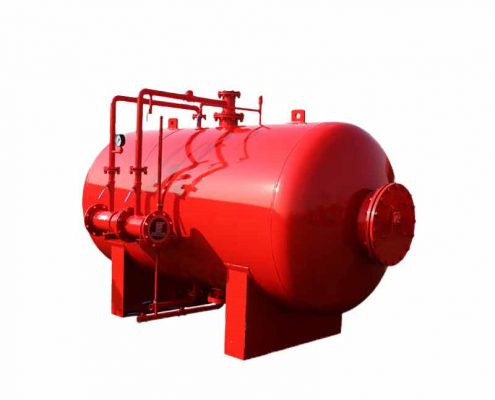Reservoir-storage tank
Storage tank is a kind of pressure vessel, which is a closed vessel capable of withstanding pressure. Pressure vessel is widely used, and it plays an important role in many sectors such as industry, civil use, military industry and many fields of scientific research. Among them, the pressure vessels used in chemical industry and petrochemical industry account for about 50% of the total pressure vessels. Pressure vessels are used in chemical and petrochemical fields, mainly for heat transfer, mass transfer, reaction and other technological processes, as well as for storing and transporting pressurized gas or liquefied gas. It is also widely used in other industrial and civil fields, such as air compressors. Auxiliary machines of various special compressors and refrigeration compressors (coolers, buffers, oil-water separators, air tanks, evaporators, liquid coolant storage tanks, etc.) are pressure vessels.
manufacturing process
- Pressure vessel manufacturing processes can generally be divided into: raw material acceptance process, marking process, cutting process, derusting process, machining (including edge planing, etc.) process, rolling process, assembly process, welding process (product welding test plate), nondestructive testing process, opening and marking process, general inspection process, heat treatment process, pressure test process and anti corrosion process.
- Different welding methods have different welding processes. The welding process is mainly determined according to the material, brand, chemical composition, structural type and welding performance requirements of the weldment. First of all, we should determine the welding methods, such as manual arc welding, submerged arc welding, argon tungsten arc welding, gas shielded metal arc welding, etc. There are many kinds of welding methods, which can only be selected according to specific conditions. After the welding method is determined, the welding process parameters are formulated. The types of welding process parameters are different. For example, manual arc welding mainly includes: electrode type (or brand), diameter, current, voltage, welding power source type, polarity connection method, welding layer number, number of passes, inspection method, etc.






